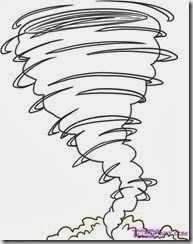The project was small BI project initiated to deliver a dashboard to serve a specific needs. This was the first time for that customer to work and ask for a dashboard. We suggested the proper tools and as our company is a partner to the product main company we initiated the process. A big mistake done from our side by initiating the purchase order without considering the right version to buy and before do the required communication to know the exact required licence to perform the work. I discovered this and raised as a project manager and communicate this with the customer as well to maintain their trust and to transparent with them.
To overcome this we started the project and used some trial licence keys provided by the product company till we get the official licence key. Again we discovered that we still need extra licence key to be able to deliver the required functionality. Again as a project manager i communicate this with our customer and raise it to the responsible person.
One week later, our bad luck continued. the development server went down and the server admin told us that there is no backup taken and we may loss our completed work and rework everything from scratch. This was like a nightmare and i started to get the feeling that this is my first failed project and i start preparing myself to accept this. there is no one who can win for ever. life is a mix of loss and win. but really this was very difficult for me. we are already one week behind the schedule. the project dead line passed one week ago. and we are over budget because the licence key that we forget about. the customer is unsatisfied and unhappy and worried about the project as well.
For a moment i thought that as a project manager i have to keep the customer updated even if the things get worst. and my manager as well. I communicated the situation to the customer and i was facing issues from their IT department, as they was careless and not supportive. I sent our client an email that i explained everything and make it very clear. that we are facing a delay, rework and may be extra budget. i decided also to visit my manager in his office to discuss the situation. here it was the turning point. my manager was open and tried to help me and find options. We consulted on of our technical consultant (one of my best friends) on the server issue that we encountered with our client and we come up with some suggestion to try. Our client escalated the careless behaviour of IT department and internally they start working to fix the problem.
By end of the day, the light started to raise again. the server is not only up and running but also we were able to recover all our work. we took around one week to close everything and continue our development and another good news come. The licence key problem was solved and we migrated our work to production and BINGO.... everything is perfect and working fine. the customer is happy and more over they was appreciating to be transparent with them and to keep them updated about everything. The project is delivered on budget and finally the nightmare disappeared.
The lesson learned from the project:
- you need to consider project risks even if you did the same project 1000 time before.
- you need to be transparent with your customer. they will appreciate it and they will try to help you to complete the project.
- Don't use trial keys and don't start the project till you install all required tools.
- take usual backup. you may work with a lazy server admin like the one in our story and you discover too late that he is not taking any server backup!!??
- Sending weekly update and documenting every single requirement is the right approach.
- don't assume that every one will do his job in a perfect way. you may face a lazy sales account manger and partnership coordinator whom may destroy your project before it even starts.
- You friends may save you in the most critical situation and in the darkest moments.





